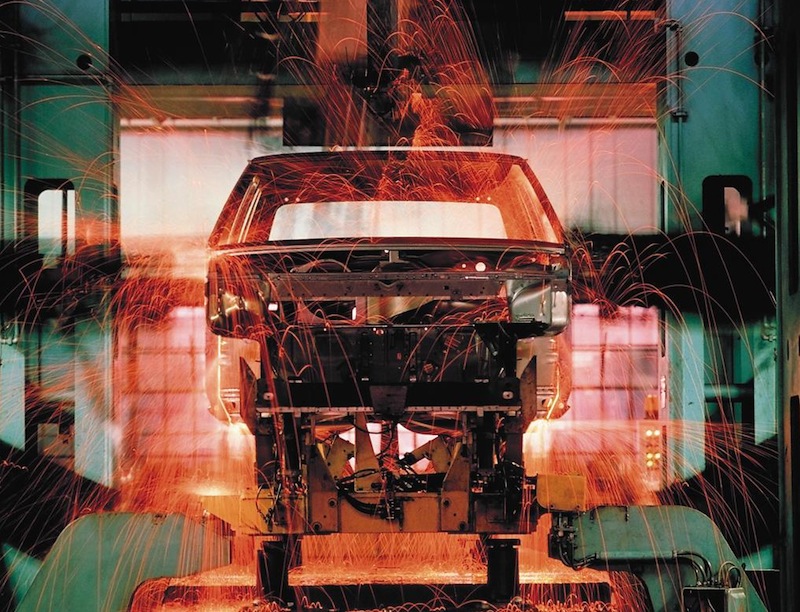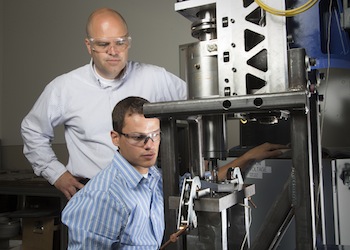With the automotive industry’s shift toward lighter materials, demands on welding technology are changing
The reasons behind the increasing demand for aluminium within the automotive industry are well documented: the material is around one-third the weight of steel, which in turn leads to fuel consumption advantages and, hopefully, higher sales at the dealership. The drawback for manufacturers is that the established welding technologies used for steel are not a direct match for aluminium.
For starters, aluminium exhibits a far lower melting point, which, along with greater thermal conductivity, is a sure-fire recipe for panel damage. Another issue concerns safety: the inherent aluminium oxide layer at the panel surface leads to weak welds that demonstrate low fatigue resistance. This oxide layer also has the unfortunate effect of contaminating spot welding tips, thus inflating the cost of consumables.
Despite these obstacles, there appears to be little thwarting the meteoric rise of aluminium. Indeed by 2025, according to material trends expert Ducker Worldwide, 18% of vehicles will have all-aluminium bodies compared with less than 1% now. In addition, the amount of aluminium sheet per vehicle is forecast to increase tenfold. With this in mind, materials suppliers such as Alcoa have recently made substantial investments to increase the supply of aluminium sheet to the automotive industry.
While premium models such as the Audi A8 and Jaguar XJR paved the way for the use of aluminium bodies, high-volume models are now getting in on the act, including the 2015 Ford F-150 pick-up. The latter features aluminium doors, bonnet, side panels, load bed and tailgate, although these are all assembled using structural adhesive and thousands of rivets. There are two main issues here: firstly, riveting guns have a limited range of joint configurations; and secondly, while the process is adequate for joining aluminium to low-strength steels, it struggles with modern ultra-high strength steels (UHSS) and advanced high-strength steels (AHSS).
“While a true MMV structure offers the protection of UHSS with the weight savings of aluminium and magnesium, it also poses numerous manufacturing challenges in terms of corrosion, joining and design" – Pedro Garrido, ABB

For this reason, ABB is currently investing heavily in the research of welding and joining technologies. The aim is to generate continuous innovation in areas such as arc welding, laser welding, laser-arc hybrid welding and friction stir welding (FSW) to provide solutions for various production systems.
Friction stir welding
Honda has been among those recently to exploit FSW for the continuous welding of steel and aluminium, applying it to the sub-frame of the latest Accord. Based on FSW, Honda’s technology is said to generate a stable metallic bond between steel and aluminium by moving a rotating tool on top of the aluminium workpiece, which is lapped over the steel workpiece using high pressure. As a result, the welding strength becomes equal to or beyond that of conventional MIG welding, says Honda.
As well as reducing vehicle weight, Honda claims that electricity consumption during the welding process is halved. Furthermore, the innovation enabled a change in the structure of the Accord sub-frame and the mounting point of suspension, which increased the rigidity of the mounting point by 20%. The vehicle-maker says the system can also be used for aluminium-to-aluminium welding.
Adapting spot welding
GM is another manufacturer which has recently put forward a new way of joining aluminium, this time a form of resistance spot welding that uses a patented, multi-ring domed electrode. The process is said to work on sheet, extruded and cast aluminium because GM’s proprietary multi-ring domed electrode head disrupts the oxide on the surface of the material to enable stronger welds. Apparently the process is effective on materials up to 4mm thick.
Another advantage of GM’s process is that only minor changes are required to production equipment. Liquid cooling lines must be installed to keep special copper welding tips at the proper temperature, while a machine that resurfaces the copper welding tips is also required. Each tip lasts for about 4,000 welds; they are resurfaced after every 50 welds until they wear out.
Away from the OEMs, The Welding Institute (TWI) in Cambridge, UK, recently announced a breakthrough in the use of remote laser welding to join aluminium. Remote laser welding is a fast and economical method for joining thin metal structures, and is particularly suited to the rapid manufacture of closures such as door panels. However, for outer panels, the crack-sensitive AA6000 series aluminium materials which are commonly deployed mean that remote laser welding is not possible.
Cold spray technology
TWI has developed a process that deploys cold spraying technology to deposit a layer of filler material at the location of the weld. The process is applied to the blanks before entering the welding line and can subsequently be processed at high speeds using remote laser welding without the need for shielding gas. According to TWI, the resulting welds are crack-free.
In cold spraying, powder particles (typically 10 to 50µm) are accelerated to high velocities by a supersonic compressed gas jet at temperatures far below their melting point. Upon impacting the substrate, the particles experience extreme and fast plastic deformation that disrupts the thin surface oxide films present on all metals. This allows intimate conformal contact between the exposed metal surfaces under high local pressure, permitting welding to occur and thick layers of deposited material to build up rapidly. TWI says that deposition efficiency is very high, above 90% in some cases.

With cold spray, however, materials can be deposited without high thermal loads, producing coatings with low porosity and oxygen content. TWI uses a high-specification commercial system (a CGT Kinetiks 4000) that can achieve process gas pressures of up to 40 bar and temperatures of up to 800°C. The active jet cold spray gun can be operated with or without pre-heating the gas and with a variety of spray nozzles. This enables the system to be configured according to requirements.
Welding aluminium to UHSS
Academia also has a role to play in developing the automotive technologies of the future, and the welding of aluminium is no exception. For instance, Michael Miles, manufacturing engineering technology professor at Brigham Young University (BYU) in Utah, has reportedly found a way to create an extremely strong bond between aluminium and UHSS. It is called friction bit joining and uses a small, consumable bit to create a solid state joint between metals. The method was invented by Miles and Kent Kohkonen, a retired BYU professor, working with local company MegaStir Technologies.
The latest development in the research, which was conducted in collaboration with the University of Ulsan in Korea, successfully bonds aluminium with cast iron by inserting a thin layer of steel between the two metals to facilitate the bonding process. BYU’s friction bit joining method, which is being developed in unison with MegaStir and Oak Ridge National Lab, has received funding from the National Science Foundation, the Department of Energy, the state of Utah and a number of automotive suppliers in Korea.






































